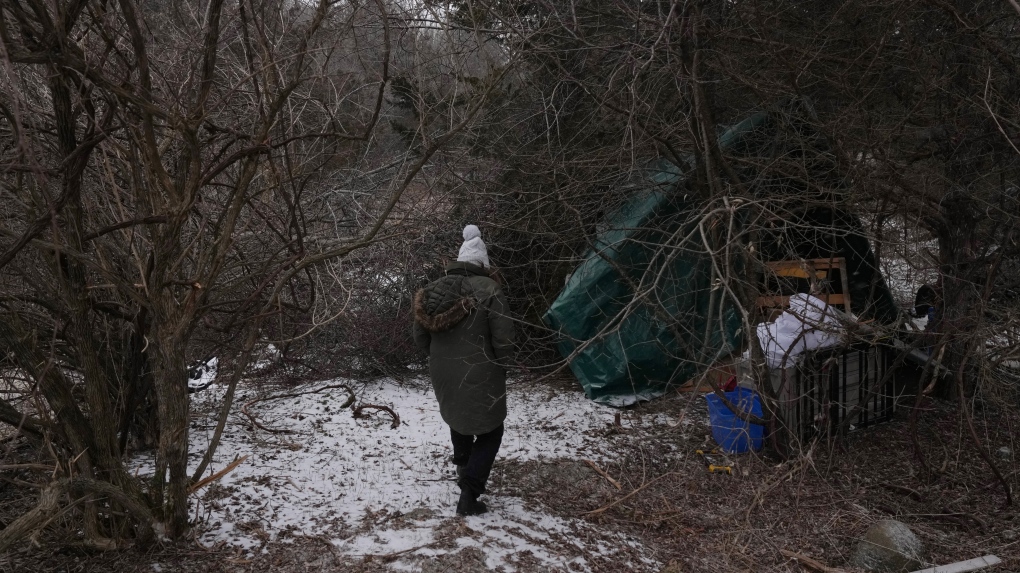Belleville, Ont. needs business case for new health hub during opioid crisis, province says

TORONTO –
An eastern Ontario city beleaguered by opioids must come up with a business plan if it wants $2 million to fund a health and social services hub, Premier Doug Ford’s government said Wednesday.
Progressive Conservative lawmaker Todd Smith, who represents the area, said he has made it clear to the mayor of Belleville, Ont., that the province needs a costing and business plan before moving forward.
“I can’t go into (the) Treasury Board and just say I need two million bucks,” Smith told The Canadian Press. “There has to be a costing estimate, there has to be a business plan around that, and so that’s what the organizations involved are working to do right now.”
Belleville declared a state of emergency earlier this month after first responders were called out to 17 drug overdoses in 24 hours.
Hastings Prince Edward Public Health said Health Canada testing has confirmed that the drugs police found in Belleville linked to the spate of overdoses included an opioid, a benzodiazepine (a depressant like Valium) and xylazine, a tranquillizer used by veterinarians.
Fentanyl, the opioid involved in the vast majority of drug overdose deaths in Ontario, is often combined with benzodiazepines. The addition of xylazine is a more recent phenomenon.
Naloxone can reverse an opioid overdose, but does nothing for benzodiazepines and xylazine.
Mayor Neil Ellis said Tuesday the province did not commit to the $2-million funding request to help kick-start construction of a centralized hub that would offer addictions and mental-health services and money to open a detox centre.
Ellis said the city will go it alone if the province won’t step up.
“We can’t wait a month, we can’t wait three months,” Ellis said. “Our hope was to have this up and running by December this year.”
The city, at the behest of the province, is also working on a “mental health and addictions strategy” that will be completed in collaboration with the local Canadian Mental Health Association office.
The province has provided one-time stabilization funding to increase the number of first responders in downtown Belleville and to increase staffing at local outreach services.
Smith said he toured the proposed Bridge Hub over the weekend.
“There’s been no real plan on how much the renovations would cost,” Smith said. “I’m working with my colleagues in cabinet, Treasury Board and caucus to potentially look at this.”
An online dashboard with data from Hastings Prince Edward Public Health shows that Hastings-Quinte Paramedic Services responded to 371 opioid-related calls in 2023.
There were 252 emergency department visits related to opioid poisonings in that time period and 50 suspected drug-related deaths.
“The idea that a business case needs to be presented while the mayor has declared a literal state of emergency is preposterous,” said Adil Shamji, the Liberal critic for health and a doctor himself.
“This is not a business decision, this is a question of lives, of health care and the individual dignity of all of these people who are being swept up in the opioid crisis.”
He said the government should be giving the mayor of Belleville exactly what he wants and invest in public health units as well as mental health and addiction services.
“Instead, all we see is dragging their heels and stalling, and people are dying as we wait,” Shamji said.
The situation in Belleville is a microcosm of what is happening across Ontario in both cities large and small, in rural regions and in First Nations.
The latest data from the Office of the Chief Coroner, up to the third quarter in 2023, show a nine per cent decrease in opioid-related deaths, at 617 lives lost, compared to the quarter before where 678 people died by opioids.
The coroner’s data show 1,947 people died from opioids through the first nine months of last year. That mortality rate is 64 per cent higher than in 2019.
Illicit fentanyl emerged in Ontario in 2015. Since then the province has seen a staggering rise in deaths, especially once the pandemic began in early 2020.
This report by The Canadian Press was first published Feb. 21, 2024.
–with files from Allison Jones and Sonja Puzic
View original article here Source









